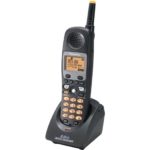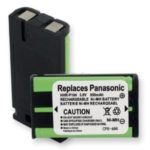 Hello, this is Ben from P1Repair.com talking about….
Hello, this is Ben from P1Repair.com talking about….
Panasonic KX-TGA450b Cordless Phone
Buy – Sell – Repair – DIY
I have been repairing Panasonic cordless phones for over 6 years. Before that I was in the telecom repair business since 1992 repairing business class high level desk phones for companies all over the US and Canada. I got into Panasonic cordless phones when the KX-TGA400b model was discontinued by Panasonic. The phone was very popular and the keypad had significant flaws. I had been designing membrane keypad repair parts for desk phones for years so adapting it for a cordless phone was simple.
The Panasonic KX-TG4000b phone system was later replaced by the KX-TG4500b. Panasonic learned a little from their mistakes with the keypad in the 400b. The new keypad design for the KX-TGA450b did have improvements but was far from indestructible. While the 400b had problems with all the number keys, the kx-tga450b generally only has issues with the TALK and OFF buttons. That is because more silicone rubber was used for those buttons. To speed up production they don’t cook the keypads long enough at the factory and the oils eventually seep out and clog up the button contacts. That was one of the main issues with the 400b model and is still the issue today with the 450b model.
KX-TGA450b DIY Keypad Repair Kit
The membrane keypad I designed repairs all the buttons and blocks any new oils and contaminants from reaching the circuit board contacts. Membrane keypads are made of several thin layers, usually with at least a spacer layer and a conductive layer. Many membrane keypads employ additional rubber or plastic key caps to give the button a more traditional look and feel. My membrane turns the original Panasonic rubber keypad into a membrane keypad with rubber button cover. From the outside you cannot tell the difference but on the inside you have all brand new conductive contacts! The new carbon material contacts cannot wear out like the original carbon rubber buttons and they are also sealed away from any particles or oils from the rubber pad itself!
KX-TGA450b DIY Keypad Repair Kit on eBay
I have installed thousands of membrane keypads in different model phones and hundreds in the KX-TGA450b model phone. I have also sold many more self-install membrane repair kits for the KX-TG4500b cordless handsets. Custom designed and laser cut specifically for the Panasonic KX-TGA450b phone, nothing else comes close for dependability. They may not look like much but they do more than just get the job done.


